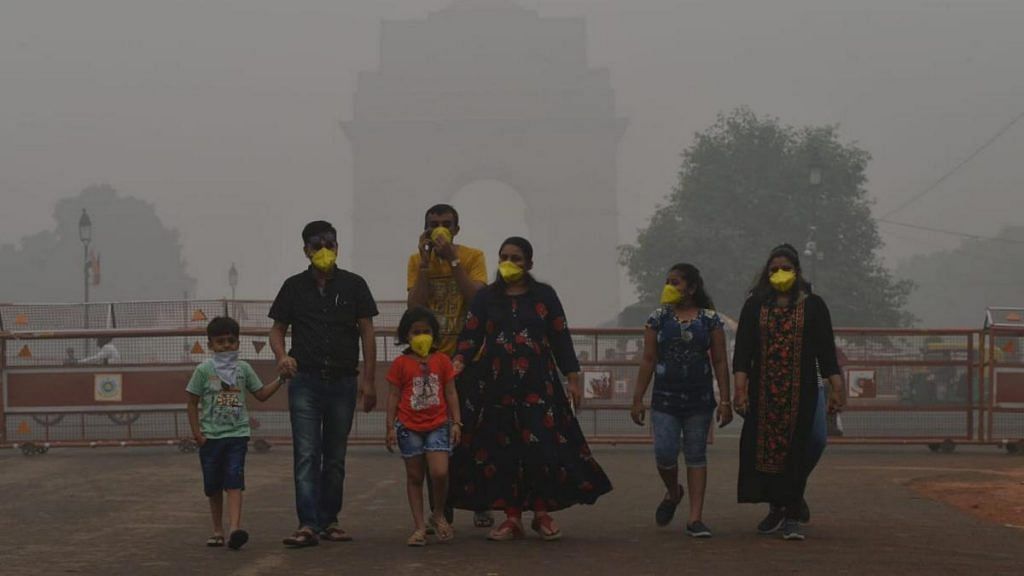By now it is clear that we’re headed straight into the vortex of a national public health emergency and that our children are the most deeply affected.
Every day, I find new studies that validate this fact, such as the one in the Yale Global Health Review which says that Delhi’s children are the most vulnerable to the toxic effects of polluted air, resulting in decreased quality of life and increased mortality rates.
Another study, led by pulmonologist Prof. S.K. Chhabra, former Director-Professor, Department of Pulmonary Medicine at Vallabhbhai Patel Chest Institute and current Head of Department, Pulmonary Sleep and Critical Care Medicine, Primus Super Speciality Hospital, provides powerful evidence that children growing up in the polluted environs of Delhi suffer from reduced lung growth, as compared to children growing up in developed countries. Accepted in the journal Indian Paediatrics in July 2016 and published in its September issue, the ICMR-funded study finds that while both Indian and US children have nearly the same lung size till the age of eight, when the lungs complete their normal physical growth, subsequent growth is different between the two countries: both boys and girls in India have lungs that are about 10 per cent smaller by the time they become adults.
Also read: Covid virus found on pollution particles, masks & social distancing a must, say govt experts
Dr Chhabra tells me he wasn’t surprised by these findings when he conducted this study. ‘Air pollution retards lung growth in Delhi’s children. Even Indian adults have smaller lungs than their US counterparts. Smaller lungs mean poorer exercise capacity and greater vulnerability to respiratory symptoms and diseases. In fact, air pollution retards the overall growth of children,’ he says.
The scariest report is a news story I read that correlates air quality to patient admissions and quotes pulmonologists and paediatric chest specialists recommending that people leave Delhi. Data from the Vallabhbhai Patel Chest Institute shows that the number of patients admitted in its respiratory wards increased by almost 80 per cent in the 10 years between 2003–04 and 2013–14.
‘What is most worrying is that 10 to 15 years ago, when air pollution levels had come down, our average OPD attendance and admissions in respiratory medicine at AIIMS saw about a 20 per cent decline.We seem to have lost out on our own achievements. As pollution levels have gone up, our public health success has been reversed,’ the report quotes Dr Randeep Guleria, the then head of respiratory medicine at AIIMS, as saying.
Later, when I interview Dr Guleria, he will also tell me that children are more vulnerable not just because they respire at a faster rate but also because they play outdoors much more and thus their overall exposure to pollutants is higher. ‘Additionally, in children you have a lung that is still growing, evolving…so exposure [to polluted air] hampers the growth of lungs,’ he says, referring to Indian and global studies that show that children growing up in areas where pollution levels are high have stunted growth and lower lung capacity. He also suggests that air pollution may be playing a role in ‘recurrent chest infections in children, predisposing them to weaker lungs and higher chances of chronic bronchitis and respiratory problems later in life’.
In June 2017, AIIMS will begin an ICMR-funded study that will go on to show that there is a high onset of respiratory symptoms leading to increased morbidity and mortality even with short-term exposure to air pollution.
Also read: Pollution, climate change, malnutrition will affect our kids for life, Lancet report says
Practically every day I find myself spotting new research linking air pollution to health harm. Studies link air pollution to Alzheimer’s, dementia, depression, obesity, arthritis, breast cancer – the list is endless. I wonder why others can’t see this menace, and then remember that I too was blind to it until three years ago.
At CFA, the path before us was clear. It all boiled down to the question of how we could better link air pollution to disease, disability and death in order to appeal to the larger public consciousness. As a group, it occurred to us that if CFA couldn’t do more, perhaps the best way forward was to document what we had accomplished so far so that others could build on our work. At our next meeting, one of us suggests that we archive our work in an easy-to-understand video, as spreading our knowledge base visually would make it more accessible.
It is January and team CFA is sitting in the garden of yet another, smaller rental that my family has recently had to move into, discussing how we can push ahead on awareness and advocacy. This house has lots of glass and light, and though the move here hasn’t been as traumatic as the last, it has had its share of tribulations. Owing to a bit of bad luck, I slipped and hurt my foot a couple of days before the packers arrived and had to hobble in a cast through the move. But in a bigger scare, an entire glass door in the new house disintegrated on my daughter in a freak accident, cutting her chest and wrist, scarily close to her ulnar vein, requiring several stitches in the middle of the night.
Everything else remains the same around me, despite the new environment; our awareness about air pollution grows and deepens, even as frustration with the lack of resources builds up.
